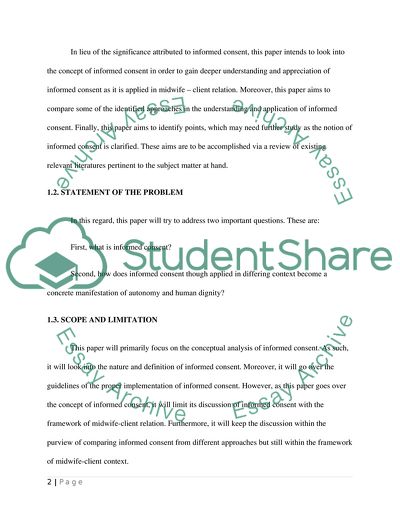Cite this document
(Informed Consent in Midwifery Research Paper Example | Topics and Well Written Essays - 2250 words, n.d.)
Informed Consent in Midwifery Research Paper Example | Topics and Well Written Essays - 2250 words. https://studentshare.org/health-sciences-medicine/1733759-literature-review-on-consent-in-midwifery
Informed Consent in Midwifery Research Paper Example | Topics and Well Written Essays - 2250 words. https://studentshare.org/health-sciences-medicine/1733759-literature-review-on-consent-in-midwifery
(Informed Consent in Midwifery Research Paper Example | Topics and Well Written Essays - 2250 Words)
Informed Consent in Midwifery Research Paper Example | Topics and Well Written Essays - 2250 Words. https://studentshare.org/health-sciences-medicine/1733759-literature-review-on-consent-in-midwifery.
Informed Consent in Midwifery Research Paper Example | Topics and Well Written Essays - 2250 Words. https://studentshare.org/health-sciences-medicine/1733759-literature-review-on-consent-in-midwifery.
“Informed Consent in Midwifery Research Paper Example | Topics and Well Written Essays - 2250 Words”. https://studentshare.org/health-sciences-medicine/1733759-literature-review-on-consent-in-midwifery.


